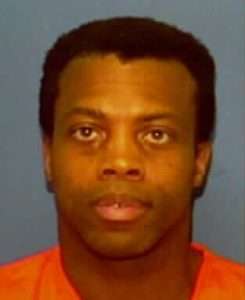Pedro Medina was executed by the State of Florida for the murder of Dorothy James
According to court documents Pedro Medina would break into the home of Dorothy James who would be fatally stabbed before her home was robbed. Pedro would be arrested the next day fast asleep in Dorothy James vehicle
Pedro Medina would be convicted and sentenced to death
Pedro Medina would be executed by way of the electric chair. During the execution his head would catch on fire renewing the argument that the electric chair is cruel and unusual punishment
Pedro Medina Photos

Pedro Medina Case
Moments after convicted killer Pedro Medina was strapped into Florida’s electric chair and 2,000 volts of electricity surged into his body this morning, flames leapt from the inmate’s head, filling the death chamber with smoke and horrifying two dozen witnesses.
“They’re burning him alive,” witness Michael Minerva muttered as flames shot four to six inches into the air from the metal helmet that covered Medina’s shaved head.
It was the second time flames have risen from the mask of an inmate’s head during a Florida execution, and today’s botched event immediately drew renewed attention to the controversial practice and whether it is an appropriate form of punishment.
Florida Gov. Lawton Chiles (D) said that the state will consider changing its method of execution after the death of Medina, a Cuban refugee convicted of stabbing a schoolteacher in 1982
Criminologists who study the death penalty said that, around the country, there have been at least a half-dozen malfunctioning electrocutions since 1983. Before today, the two most recent were in Virginia: In 1990 blood spewed from the mask of an inmate being electrocuted and the following year, a second cycle of electricity was required to execute an inmate.
Witnesses said Medina’s last words, as he was strapped into the oak electric chair, were: “I’m still innocent.” The chair has been in use at the Florida State Prison in Starke, near Gainesville, since it was made by inmates in 1923.
Minerva, a lawyer for the Capital Collateral Representative, the Florida agency that defends death row inmates, said that after the flames were extinguished, “you could smell burning flesh,” something he had not experienced during five previous executions that he had witnessed
Another witness, Associated Press reporter Ron Word, wrote that “blue and orange flames up to a foot long shot from the right side” of Medina’s head, “and flickered for 6 to 10 seconds.”
Word added that “the smell of burnt flesh filled the witness room (separated from the death chamber by glass) and lingered.”
As the witnesses gasped, Corrections Department spokeswoman Kerry Flack said a maintenance supervisor wearing electrical gloves patted out the flames while another official opened a window to disperse the smoke.
Flack said that “flames were visible on the right side of the helmet” within seconds of Minerva receiving the first of three jolts of electricity. But Flack said there was “no noticeable reaction from the inmate,” whose body lunged backward in the chair when the fatal charge was administered
Today’s botched execution brought new calls for reform from capital punishment foes in Florida, which along with Texas and Virginia, most frequently invokes the death penalty. Medina was the 39th person put to death in the state since the U.S. Supreme Court lifted a ban on the death penalty in 1976.
“When you torture someone to death, the Eighth Amendment {barring cruel and unusual punishment} clearly has been violated,” said Robyn Blumner, executive director of the Florida chapter of the American Civil Liberties Union.
Michael Radelet, chairman of the sociology department at the University of Florida and the author of four books on capital punishment, said “in this case, the botched execution was only the fourth or fifth most important thing.”
Radelet said Medina had a lifelong history of mental illness and that the Florida Supreme Court was deeply divided on the penalty for Medina, voting 4 to 3 to uphold the execution. The case also had drawn the attention of Pope John Paul II and the state’s Catholic bishops, who had pleaded for mercy.
Medina, who was among the 125,000 Cubans who fled to the United States during the 1980 Mariel boatlift, was convicted for the April 3, 1982, stabbing death of Dorothy James, a neighbor who befriended him after he moved to Florida from New Jersey. Medina was arrested several days later, driving James’s car.
Today’s incident comes seven years after another botched execution involving Florida’s antique electric chair.
In 1990, flames and smoke rose from the head of Jesse Tafero as he convulsed for four minutes while prison officials turned the electrical current on and off three times before carrying out his death sentence. He was executed for the murder of two police officers.
After that foul-up, the 11th U.S. Circuit Court of Appeals ordered Florida to halt executions until the cause of the problem could be detected and fixed
The investigation led to a series of widely ridiculed tests, several of which involved the sponge placed between the inmate’s scalp and the helmet to act as a conduit for the electricity.
Corrections officials blamed the 1990 fire on a plastic sponge, which had been substituted for a natural one that had been used for decades, until it wore out. They reached that conclusion after a plastic sponge that was dropped into a kitchen toaster burst into flames.
The sponge used today, corrections officials said, was a natural one.
The cause of today’s problem has not yet been determined, Flack said, but state officials acknowledged that the execution method will need to be reviewed.
Reacting to the event, Lt. Gov. Buddy MacKay, said, “Lethal injection would be a more reliable and more cost-effective method of execution.” But he added, “The last thing we want to do is generate sympathy for these killers.”








